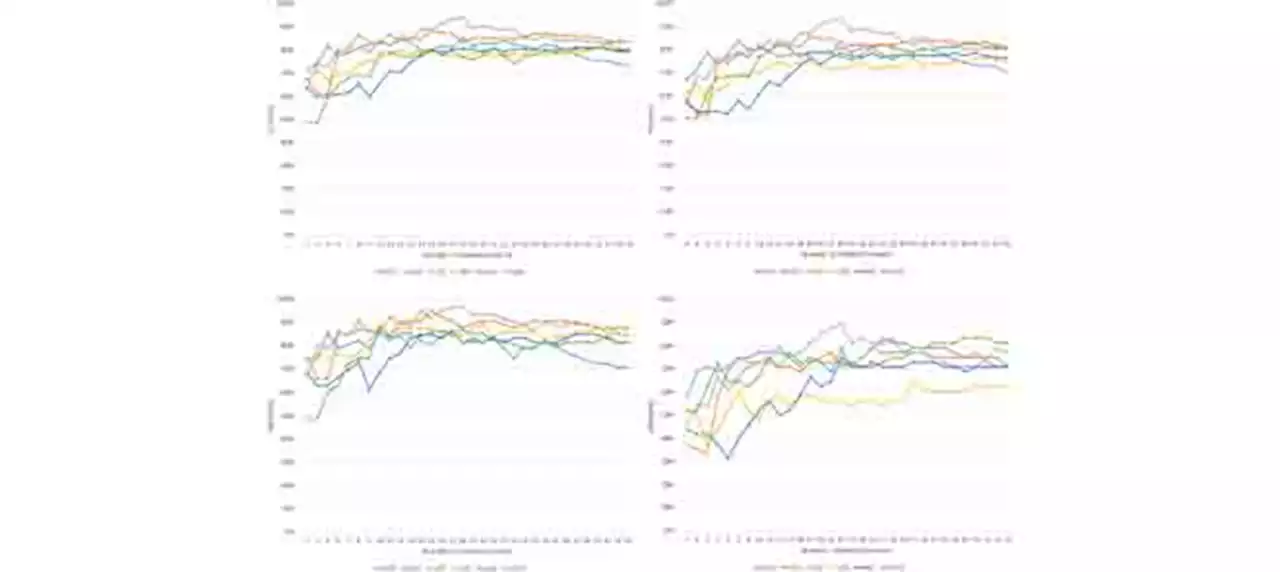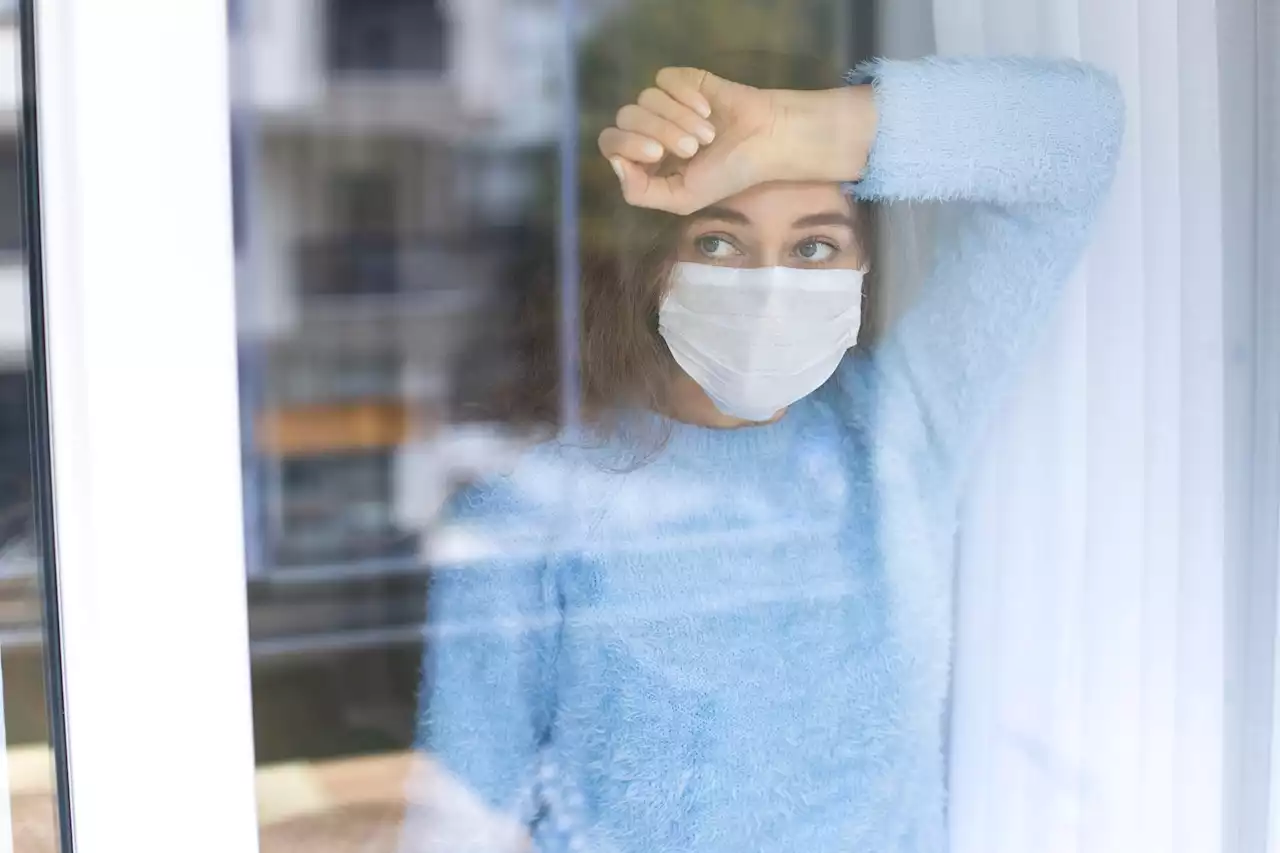The feasibility of reproducing the previously observed spatial summation of pain effect during the COVID-19 pandemic biorxivpreprint UniLuebeck JagiellonskiUni COVID19 coronavirus covid pandemic pain
By Neha MathurOct 6 2022Reviewed by Danielle Ellis, B.Sc. In a recent study posted to the bioRxiv* server, researchers demonstrated the feasibility of reproducing the previously observed spatial summation of pain effect during the coronavirus disease 2019 pandemic. Additionally, they measured the association between pain-related expectancy and SSp.
The order of the two experimental conditions was pseudorandom, and the time interval between the two was one hour. During this interval, participants filled out the subjective experience of workload score questionnaire that measured their physical activity. First, the researchers tested the cold pain threshold on the examined limb. They placed an ice cube on the palmar surface of the participant's hands and recorded the time till they first experienced pain.
Study findings Related StoriesThe authors observed a significant SSp effect in home settings. More importantly, they found that stimulating a larger area, on average, resulted in higher pain. Moreover, they observed an interaction between the sequence of immersions and the size of the stimulated area. These interactions indicated that when the stimulated hand segments were of similar size, the pain was perceived differently in the ascending vs. descending condition, i.e.
Conclusions The present study introduced a novel methodology to study SSp effect in a home setup using a previously reported ascending/descending paradigm and cold stimulation. This method remarkably reproduced the SSp effect outside clinical and non-laboratory environments, previously shown by Marchand & Arsenault, yet using a modified methodology.
Australia Latest News, Australia Headlines
Similar News:You can also read news stories similar to this one that we have collected from other news sources.
 Intranasal vaccine represents an effective broad-spectrum COVID-19 vaccine strategyIntranasal vaccine represents an effective broad-spectrum COVID-19 vaccine strategy biorxivpreprint COVID19 vaccine coronavirus covid SARSCoV2 intranasalvaccine vaccination
Intranasal vaccine represents an effective broad-spectrum COVID-19 vaccine strategyIntranasal vaccine represents an effective broad-spectrum COVID-19 vaccine strategy biorxivpreprint COVID19 vaccine coronavirus covid SARSCoV2 intranasalvaccine vaccination
Read more »
 The extent of long COVID and its characteristics among the older populationThe extent of long COVID and its characteristics among the older population ISID_org longCOVID coronavirus covid
The extent of long COVID and its characteristics among the older populationThe extent of long COVID and its characteristics among the older population ISID_org longCOVID coronavirus covid
Read more »
 Voice Features of Sustained Phoneme as COVID-19 BiomarkerBackground: The COVID-19 pandemic has resulted in enormous costs to our society. Besides finding medicines to treat those infected by the virus, it is important to find effective and efficient strategies to prevent the spreading of the disease. One key factor to prevent transmission is to identify COVID-19 biomarkers that can be used to develop an efficient, accurate, noninvasive, and self-administered screening procedure. Several COVID-19 variants cause significant respiratory symptoms, and thus a voice signal may be a potential biomarker for COVID-19 infection. Aim: This study investigated the effectiveness of different phonemes and a range of voice features in differentiating people infected by COVID-19 with respiratory tract symptoms. Method: This cross-sectional, longitudinal study recorded six phonemes (i.e., /a/, /e/, /i/, /o/, /u/, and /m/) from 40 COVID-19 patients and 48 healthy subjects for 22 days. The signal features were obtained for the recordings, which were statistically analyzed and classified using Support Vector Machine (SVM). Results: The statistical analysis and SVM classification show that the voice features related to the vocal tract filtering (e.g., MFCC, VTL, and formants) and the stability of the respiratory muscles and lung volume (Intensity-SD) were the most sensitive to voice change due to COVID-19. The result also shows that the features extracted from the vowel /i/ during the first 3 days after admittance to the hospital were the most effective. The SVM classification accuracy with 18 ranked features extracted from /i/ was 93.5% (with F1 score of 94.3%). Conclusion: A measurable difference exists between the voices of people with COVID-19 and healthy people, and the phoneme /i/ shows the most pronounced difference. This supports the potential for using computerized voice analysis to detect the disease and consider it a biomarker.
Voice Features of Sustained Phoneme as COVID-19 BiomarkerBackground: The COVID-19 pandemic has resulted in enormous costs to our society. Besides finding medicines to treat those infected by the virus, it is important to find effective and efficient strategies to prevent the spreading of the disease. One key factor to prevent transmission is to identify COVID-19 biomarkers that can be used to develop an efficient, accurate, noninvasive, and self-administered screening procedure. Several COVID-19 variants cause significant respiratory symptoms, and thus a voice signal may be a potential biomarker for COVID-19 infection. Aim: This study investigated the effectiveness of different phonemes and a range of voice features in differentiating people infected by COVID-19 with respiratory tract symptoms. Method: This cross-sectional, longitudinal study recorded six phonemes (i.e., /a/, /e/, /i/, /o/, /u/, and /m/) from 40 COVID-19 patients and 48 healthy subjects for 22 days. The signal features were obtained for the recordings, which were statistically analyzed and classified using Support Vector Machine (SVM). Results: The statistical analysis and SVM classification show that the voice features related to the vocal tract filtering (e.g., MFCC, VTL, and formants) and the stability of the respiratory muscles and lung volume (Intensity-SD) were the most sensitive to voice change due to COVID-19. The result also shows that the features extracted from the vowel /i/ during the first 3 days after admittance to the hospital were the most effective. The SVM classification accuracy with 18 ranked features extracted from /i/ was 93.5% (with F1 score of 94.3%). Conclusion: A measurable difference exists between the voices of people with COVID-19 and healthy people, and the phoneme /i/ shows the most pronounced difference. This supports the potential for using computerized voice analysis to detect the disease and consider it a biomarker.
Read more »
 What are the effects of the COVID-19 pandemic and SARS-CoV-2 infection on mental health?What are the effects of the COVID-19 pandemic and SARS-CoV-2 infection on mental health? NaturePortfolio amsterdamumc COVID19 SARSCoV2 Pandemic MentalHealth
What are the effects of the COVID-19 pandemic and SARS-CoV-2 infection on mental health?What are the effects of the COVID-19 pandemic and SARS-CoV-2 infection on mental health? NaturePortfolio amsterdamumc COVID19 SARSCoV2 Pandemic MentalHealth
Read more »
 COVID immune reaction could affect brain mechanisms and induce neurological symptomsScientists analysed blood samples taken from a small group of patients who were admitted to a London hospital during the first wave of the pandemic.
COVID immune reaction could affect brain mechanisms and induce neurological symptomsScientists analysed blood samples taken from a small group of patients who were admitted to a London hospital during the first wave of the pandemic.
Read more »
 Exploring the post-acute sequelae of COVID-19 in rehabilitated patientsIn a new study, researchers explored the cognitive and psychological functioning among patients that received outpatient rehabilitation for post-coronavirus disease (COVID) sequelae.
Exploring the post-acute sequelae of COVID-19 in rehabilitated patientsIn a new study, researchers explored the cognitive and psychological functioning among patients that received outpatient rehabilitation for post-coronavirus disease (COVID) sequelae.
Read more »
